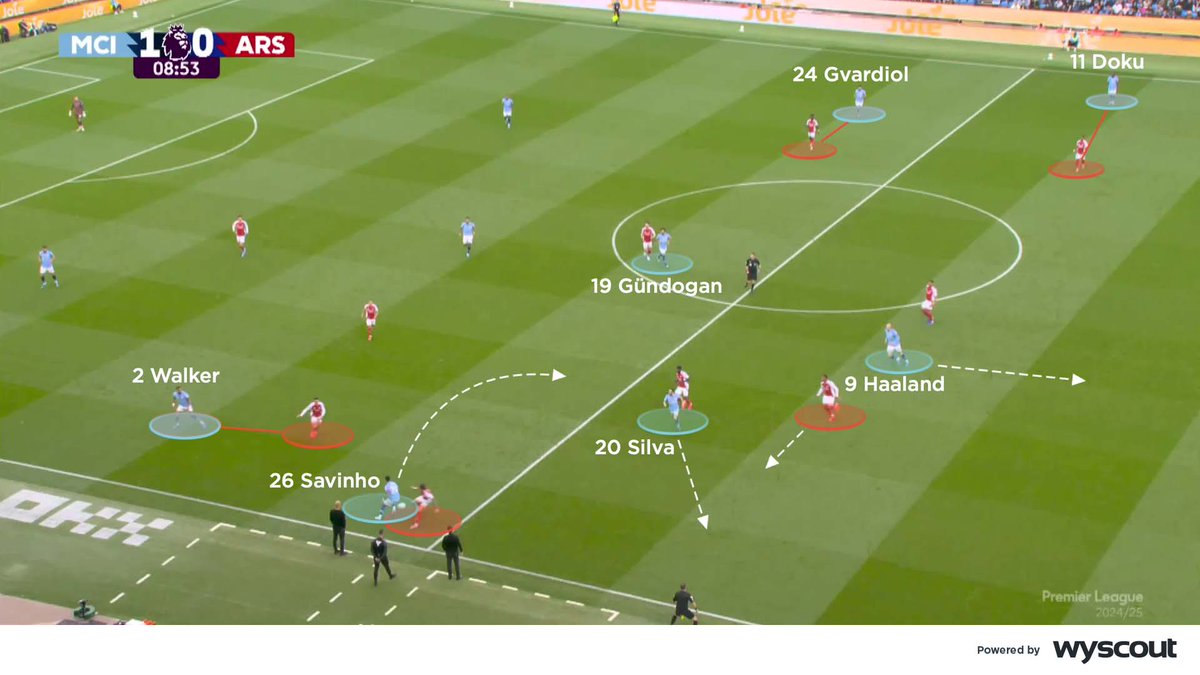👇 Thread!
🆕 Fulham secured an immediate return to the Premier League after beating rivals Brentford in the Championship play-off final. Here's our analysis from the game...
#EFLPlayOffs
🆕 Fulham secured an immediate return to the Premier League after beating rivals Brentford in the Championship play-off final. Here's our analysis from the game...
#EFLPlayOffs
🔍 Brentford’s most effective attacking build came from the left, where Rico Henry advanced from left-back; Saïd Benrahma also probed around Fulham’s double pivot (1/8)
🔴 #BrentfordFC #EFLPlayOffs
🔴 #BrentfordFC #EFLPlayOffs

🔍 The numerical overload Fulham had in central midfield forced Brentford’s midfielders to adopt narrow positions, creating spaces for Fulham in wide areas (2/8)
🔴 #BrentfordFC #EFLPlayOffs
🔴 #BrentfordFC #EFLPlayOffs

🔍 Brentford posed more of a transitional threat towards the right than the left, owing to their pursuit of the spaces vacated by the advancing Joe Bryan (3/8)
🔴 #BrentfordFC #EFLPlayOffs
🔴 #BrentfordFC #EFLPlayOffs

🔍 They defended with a more reserved 4-1-4-1 block, and the press applied by Joshua Dasilva and Mathias Jensen helped Ollie Watkins to discourage Fulham from advancing through midfield (4/8)
🔴 #BrentfordFC #EFLPlayOffs
🔴 #BrentfordFC #EFLPlayOffs

🔍 When Fulham were enjoying convincing periods of possession they adopted a 3-2-4-1 formation and established a midfield box (5/8)
⚪ #FFC #EFLPlayOffs
⚪ #FFC #EFLPlayOffs

🔍 They mostly defended with a 4-2-2-2, in which their wider midfielders and full-backs worked to negate the threat Brentford were attempting to pose in wide areas (6/8)
⚪ #FFC #EFLPlayOffs
⚪ #FFC #EFLPlayOffs

🔍 It was Brentford’s intense press, from the right, that eventually undermined the progress Fulham were making with that midfield box (7/8)
⚪ #FFC #EFLPlayOffs
⚪ #FFC #EFLPlayOffs

🔍 When they were defending with a deeper block Fulham adopted a 4-2-3-1 with which they continued to offer numbers in central areas, and applied an intense press in midfield (8/8)
⚪ #FFC #EFLPlayOffs
⚪ #FFC #EFLPlayOffs

• • •
Missing some Tweet in this thread? You can try to
force a refresh
















